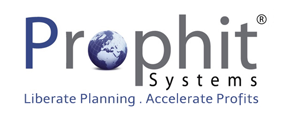FORECAST WITH THE ‘END’ IN MIND

Begin with the end in mind.
If you are implementing or reinvigorating a forecasting program, it is important to realistically review where forecasting will provide the most benefit and also which benefits will be most quickly realised.
Scenario
A business I worked with had 7 sites across Australasia, and we were helping them with improving their cost of manufacture. Prior to our engagement the management team had initiated a forecasting program so that they could have better information to run their business.
This business had a little over a thousand SKULs (Stock keeping unit by location). A choice had been made to forecast every SKUL every week out for a rolling year (52 weeks).
So every month they would review approximately 52000 pieces of data (1000 SKUL x 52 weeks) aiming to ratify these forecasts.
Not only was this a horrendous task, it was extremely error prone, it tied up planners at all sites, and created a lot of angst and resentment.
With a little coaxing we were able to confirm three significant reasons to continue forecasting:
- The first reason was to ensure they did not run the customer out of stock
- The second reason was to plan raw material purchasing on overseas suppliers
- The third reason was to facilitate forward planning so idle capacity could be used to stock build for the peak periods
Quick Fix
Once we ratified why the business needed forecasts, we could then ascertain what detail was required and how to refine the system to meet those needs in the simplest way possible.
To ensure the customers were not run out of stock, we loaded the customers 4 week rolling forecasts directly into the execution system for stock replenishment, bypassing the forecasting system all together.
All high value Raw material purchasing had six month lead times. The Capacity modelling was required out 24 months . To satisfy these information requirements we provided an interface to input Forecasts in monthly buckets by customer. We then disaggregated these forecasts using historic usage to split their customer forecasts into SKU level Forecasts. These forecasts were then loaded back into the execution system to plan raw material purchases and do capacity modelling.
The punch line was that instead of managing 52,000 SKUL-period combinations we were able to reduce this 100 fold to 20 customer forecasts over 24 monthly periods. Upon simplifying the process the users found it easy to update their forecasts. The business found it much easier to ratify and therefore trust these forecasts. With confidence in their forecasts, our client dramatically and sustainably reduced their Raw material inventories.
Top TIPS
- Understand the main benefits you expect from forecasting
- Design the simplest solution that is fit for your business purpose
- To seed the habitat and value of forecasting, plan for small wins quickly
- Review your process to ensure that you are achieving your expected outcomes
